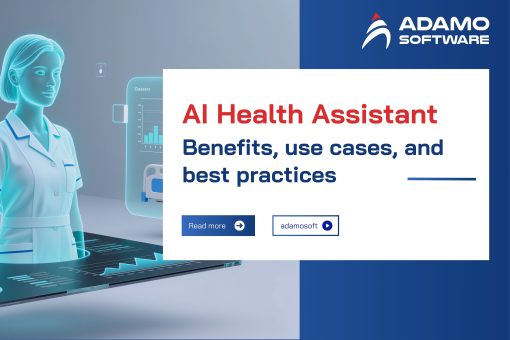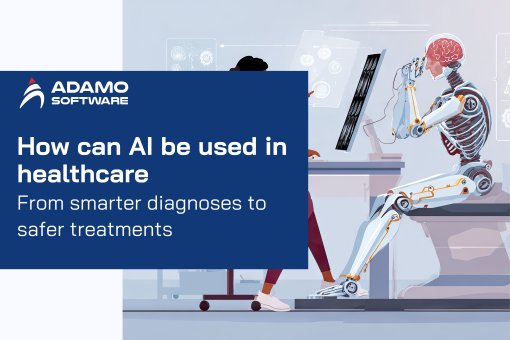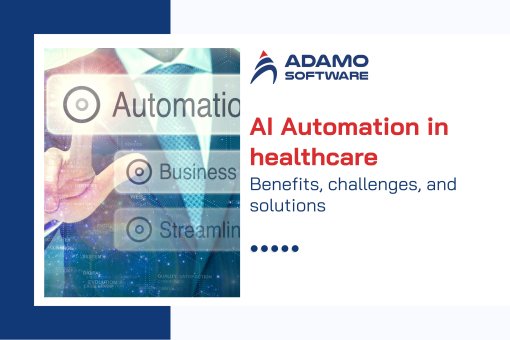What is remote patient monitoring? Tech stacks and real-life examples
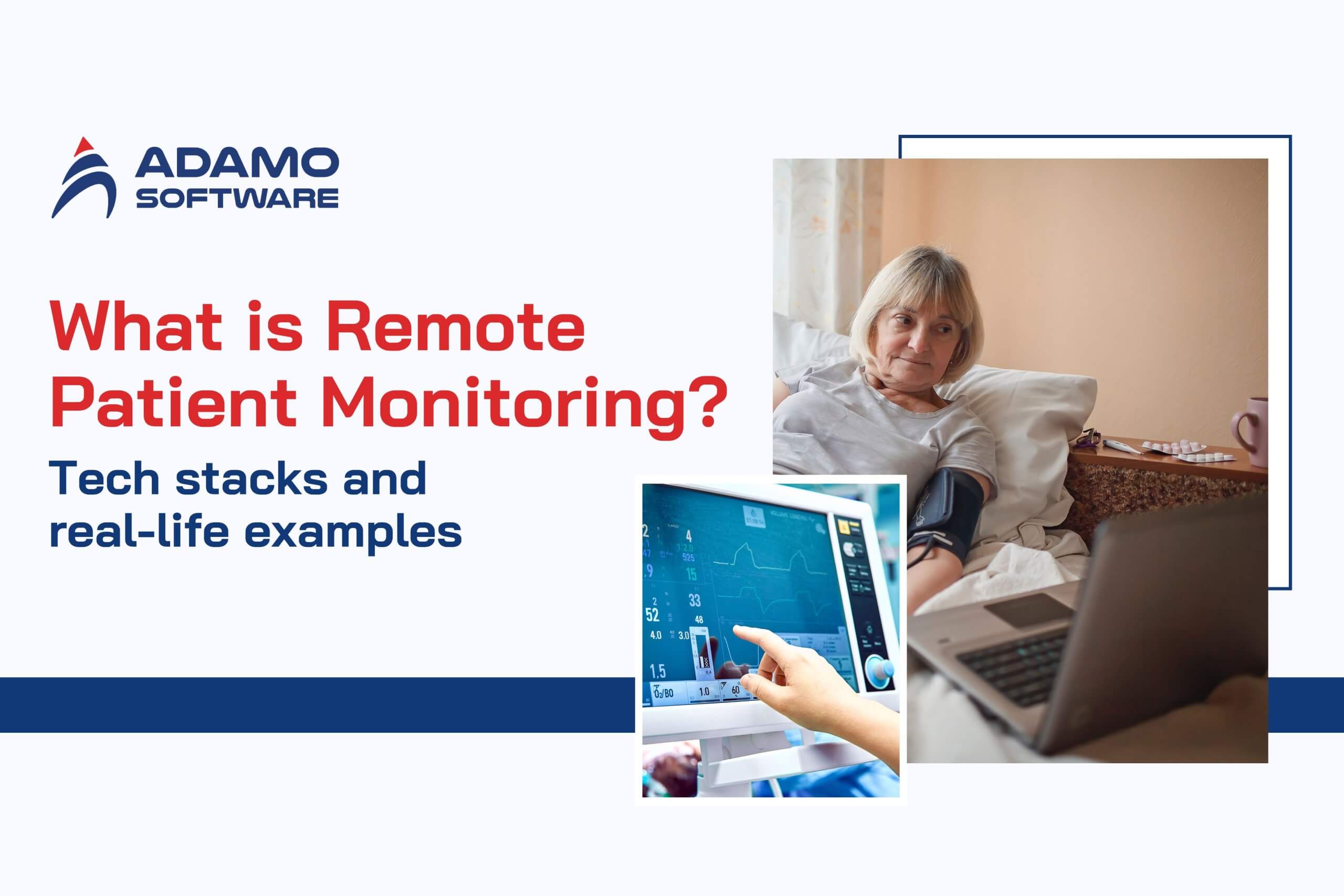
Remote patient monitoring (RPM) in healthcare enables real-time tracking of patients’ health indicators outside conventional clinical environments. The remote patient monitoring market is becoming increasingly rapidly. This system offers advantages in improving healthcare efficiency. It helps reduce hospital visits and increase patient engagement, especially for individuals managing chronic conditions.
Remote patient monitoring can track health metrics such as blood pressure, glucose levels, and oxygen saturation. Additionally, it provides clinicians with health data to make informed decisions and intervene early when necessary. In simple terms, what is remote patient monitoring? It’s a tool that enables continuous healthcare by making it possible for doctors to monitor patients’ health wherever they are.
In this article, we will explore what is remote patient monitoring and real-world examples of its software.
I. What is remote patient monitoring?
What is remote patient monitoring? The remote patient monitoring definition refers to a healthcare service that lets doctors use home and mobile devices, like wearable devices, to track and manage a patient’s chronic or acute health issues. The systems can help patients with conditions such as heart disease, diabetes, cancer, asthma, irregular sleep patterns, and even difficult pregnancies. These remote monitoring devices include blood pressure and heart rate monitors, blood glucose meters, smart nebulizers, smart scales, apnea monitors, and maternity care monitors.
The line between wearables that monitor heart rate or body temperature and those with therapeutic purposes. In addition, devices that control pain levels by manipulating nerve signals are still in flux. That uncertainty means manufacturers must be aware of regulatory issues, such as efficacy and safety, as they develop and market devices. Failure to do so could have serious consequences for the medical device manufacturer and the patient.
Some remote patient monitoring devices require the patient to check in with them periodically. Others are always on, taking measurements and sending that data to the patient’s electronic health record. Some RPM systems allow patients to use their devices, such as a smartwatch or phone, to connect to their provider without needing additional equipment. Others combine the device with a smartphone app. For example, for patients with heart disease, their doctor might instruct them to use an electrocardiogram (ECG) app that connects to a small heart monitor to detect arrhythmias.
II. How Remote Patient Monitoring works
What is remote patient monitoring, and how does RPM work? Remote patient monitoring systems may differ based on the device or the condition being tracked, but they usually share common features. One key component is a wireless sensor that measures specific health parameters and records the data. This storage must also connect to additional sensors, the healthcare provider’s database, and related applications. The applications must provide users with an intuitive interface to monitor or analyze the data and display treatment recommendations.
Data gathered by remote patient monitoring devices is transmitted to the appropriate destination and stored in a relational database system. This allows healthcare organizations to have wireless telecommunications data as individual cases or in the context of an entire health history. Typically, remote patient monitoring devices can alert patients when a healthcare provider has reviewed the data or has detected a problem, prompting them to seek medical attention.
III. Key features of an RPM solution
Developing remote patient monitoring solutions is not just about creating a software product but also about making a positive change in people’s lives. Therefore, to capture its important role, a remote patient monitoring application needs to be equipped with the following 5 key features.
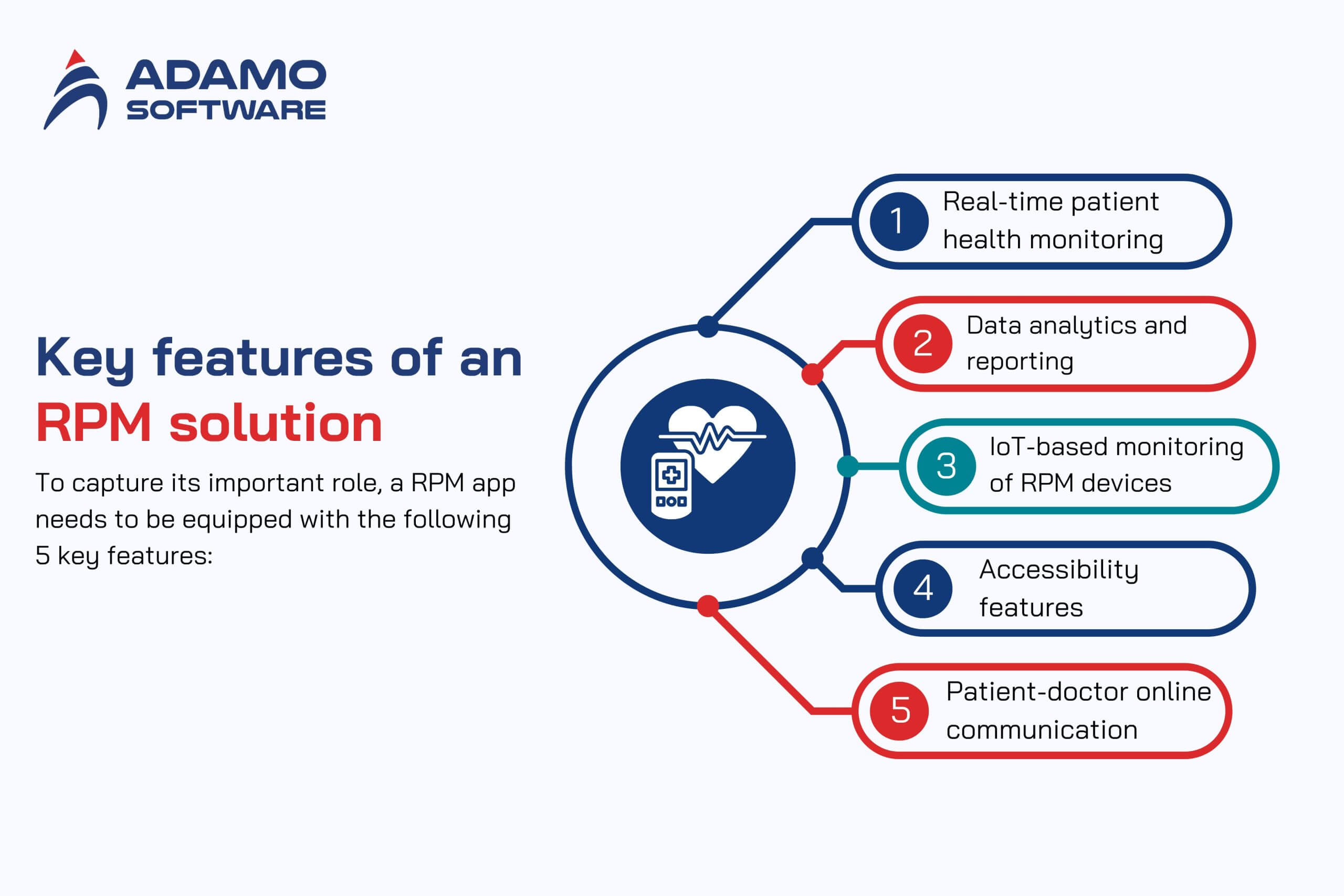
1. Real-time patient health monitoring
Understanding what is remote patient monitoring is key to developing systems that can collect health data from medical devices at pre-determined intervals. This helps to capture the patient’s health status immediately. In addition, the interaction of wearable sensors, wireless communication, IoT, and cloud computing also enables continuous health monitoring, which:
- The IoT ecosystem allows the RPM solution to be flexibly integrated with multiple health monitoring devices. This ensures a smooth flow of information between the patient and the healthcare provider.
- The wearable devices collect and transmit data wirelessly to a central system.
- A cloud platform can securely store, analyze, and send processed health data to medical professionals for further review.
2. Data analytics and reporting
Understanding what is remote patient monitoring also enables the creation of systems that allow healthcare professionals to track patient health metrics and interpret physiological data. Data analytics powered by machine learning algorithms and data visualization tools transform raw patient data into actionable insights. Additionally, this real-time intelligence empowers healthcare providers with the following capabilities:
- Identifying potential health problems or declining health conditions at an early stage.
- Risk alerts on biometric data, symptom surveys, activity, medication adherence, etc. (e.g. when heart rate and systolic blood pressure fall outside acceptable ranges).
- Analyze historical trends of patient data to detect unusual fluctuations.
- The dashboard integrates patient health data with severity scores for each patient.
- Automatically generates monthly reports based on patient survival data, etc.
With data visualization and interpretation, the RPM system promotes proactive care strategies and optimizes workflows. Ultimately driving better care outcomes and a more efficient healthcare system.
3. IoT-based monitoring of RPM devices
By understanding what remote patient monitoring is, we can integrate various medical devices to gain insights and perform correlation analysis. As RPM systems expand to include various data points, they can paint a more comprehensive picture of a patient’s health. For example, by integrating smartwatches to monitor heart rate and activity with blood pressure cuffs and glucose meters, remote monitoring systems provide a broader scope for remote diabetes management.
IoT-based RPM device monitoring also makes it easier to configure RPM parameters and identify device failures.
4. Accessibility features
Accessibility is another important factor for RPM applications. It makes sure that everyone can take advantage of technology. Voice control for data entry or navigation to facilitate adoption by patients with visual impairments and mobility disorders.
Text-to-speech functionality improves content accessibility for individuals with visual impairments. It also supports those with dyslexia and other disabilities.
Patient-first accessibility design includes screen reader compatibility, high contrast mode, clear interface elements, multilingual support, etc.
Generally, your remote patient monitoring system should be developed with non-tech-savvy user groups in mind and consider accessibility design guidelines such as WCAG and CVAA.
5. Patient-doctor online communication
Communication is a critical element for healthcare. Understanding what is remote patient monitoring helps healthcare providers integrate telemedicine features that enable effective communication between patients and doctors. This encourages proactive patient outreach and continuous remote care.
Here are some of the key telemedicine capabilities that an RPM system can build:
- Secure video conferencing enables virtual consultations. It allows healthcare providers to conduct check-ups remotely.
- Intuitive treatment plan discussions and patient status monitoring.
- Secure messaging to schedule follow-up appointments. The ability to send/receive patient status updates and adjust treatment plans.
- Educational resource libraries, such as FAQs, video libraries, exercise tips, etc., are tailored to specific health conditions.
- Tools include appointment reminders to help patients stay on schedule. They also feature medication adherence tracking and educational quizzes to support patient engagement.
IV. Practical Applications of Remote Patient Monitoring Solutions
Understanding advantages of Remote Patient Monitoring helps you develop applications that are tailored to each patient’s needs. Remote patient monitoring was initially developed to track patients with chronic and acute conditions. Today, it is also being used to monitor pregnant women, the elderly, post-operative patients, and other types of patients. Below are the most common real-life applications of RPM:
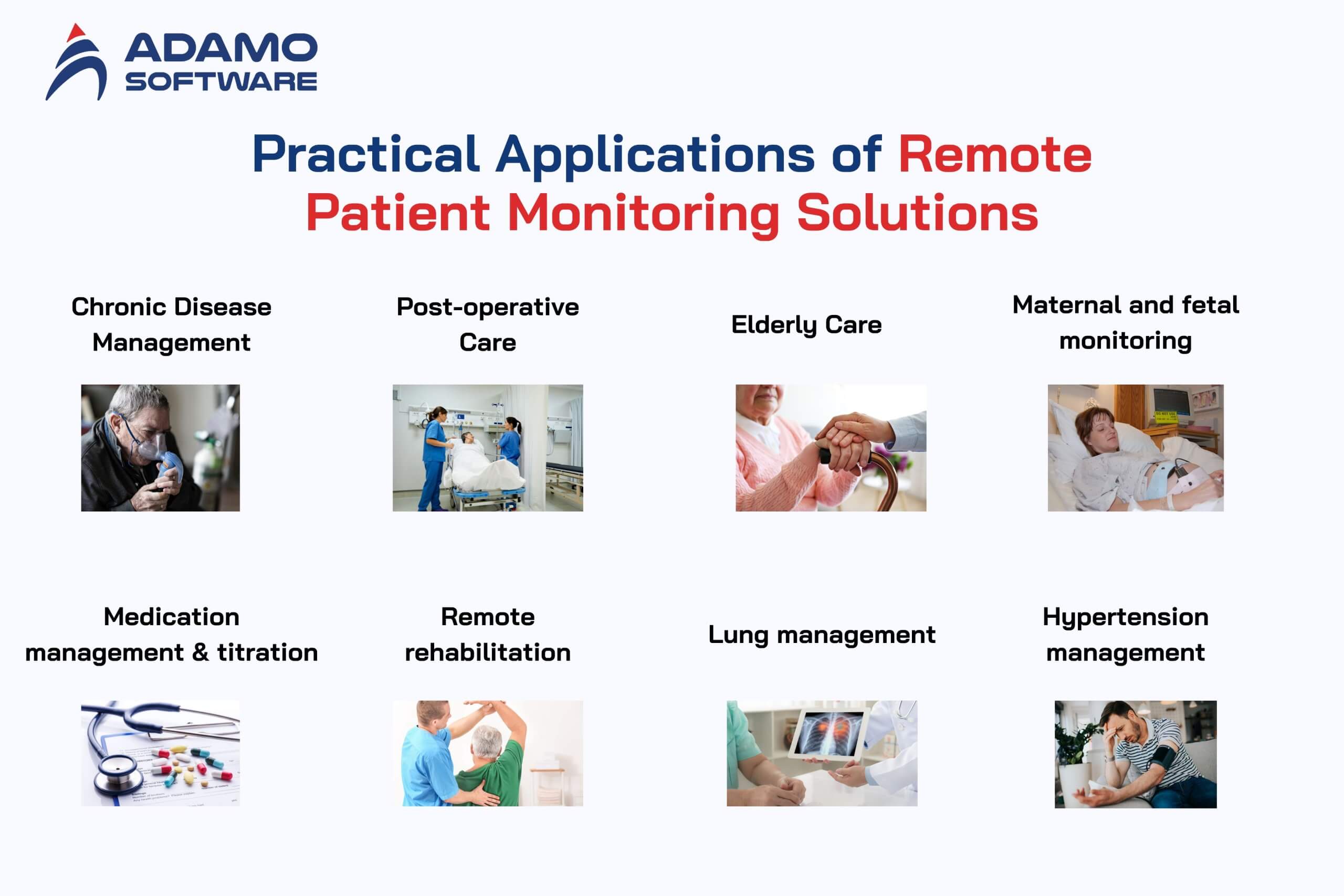
1. Chronic Disease Management
According to research from the Center for Online Health at the University of Queensland, Australia, chronic diseases such as heart disease, diabetes, and asthma are increasingly causing unplanned emergency room visits. Because these diseases can cause patients to have dangerous health problems at any time. Understanding what is remote patient monitoring can help reduce the burden on the healthcare system by detecting fluctuations in a patient’s health status. This allows clinicians to intervene before a hospital visit is necessary.
2. Post-operative Care
Understanding what is remote patient monitoring helps healthcare providers address post-operative complications such as pain, infection, blood clots, shock, and bleeding, which are common after surgery. Preventing the most severe complications is a major challenge for healthcare providers. RPM devices allow clinicians to monitor relevant post-operative patient health indicators such as heart rate, temperature, and activity level, allowing patients to recover at home.
3. Elderly Care
For seniors, regular health monitoring is essential. As the global population ages, understanding what is remote patient monitoring becomes crucial for providing effective care to seniors. As the average age of the global population continues to rise, the ability to monitor and support seniors at home is necessary.
Remote patient monitoring systems for seniors include motion detectors, temperature sensors, and bed monitors that can alert remote caregivers and emergency responders if assistance is needed.
4. Maternal and fetal monitoring
Remote patient monitoring systems are designed to assist both the mother and fetus, such as by measuring the fetal heart rate and monitoring the response to uterine contractions. These devices often come in the form of smartphone apps. They allow care providers to monitor pregnant patients remotely and enable patients to make informed decisions about their care.
A study published in the journal JMIR mHealth and uHealth reported the findings of researchers. They determined that remote fetal monitoring seemed to reduce the rate of neonatal asphyxia and lower the cost of care compared to routine fetal monitoring in health facilities. Additionally, according to the World Health Organization, there are nearly 2 million stillbirths each year, with more than 40% occurring during labor. As a result, regular monitoring and prompt access to emergency care help prevent potential complications.
5. Medication management and titration
Medication management or titration is adjusting a patient’s medication dosage based on their specific response to a particular dose. Remote patient monitoring is ideal for this task. Patients can use this device to measure their health metrics, and clinicians can review the data to determine medication tolerance and adjust the dosage.
A study conducted by researchers at UC Davis Medical Center measured the effectiveness of remote medication management for cardiovascular patients compared to traditional care methods. They found that remote monitoring and titration have the potential to improve the quality of patient care for specific types of patients.
6. Remote Rehabilitation
Remote monitoring of physical rehabilitation for patients is often done through apps that track movement and exercise. These systems depend on Bluetooth connectivity and wearable devices such as smartwatches.
According to the US Health Resources and Services Administration, some rehabilitation sessions occur via video calls, allowing therapists to monitor a patient’s ability to perform exercises correctly in real-time. Remote rehabilitation is ideal for patients who cannot visit a therapy clinic.
7. Lung Management
A pulse oximeter is a practical application to support patients with lung disease. It allows patients to report their oxygen saturation and heart rate at home. Such regular measurements are especially important during the COVID-19 and flu pandemics, as well as for those with COPD and other chronic conditions.
A study from McGill University highlights new approaches, showing that biometric wearables enable near-continuous data collection. This could be particularly useful in treating children, who may only sometimes be comfortable using devices designed for adults.
8. Hypertension Management
Managing blood pressure is important. Patients with hypertension or high blood pressure often use RPM devices, like scales and blood pressure cuffs, to transmit vital signs directly to their healthcare providers.
A recent study by a team at Mass General Brigham’s Accelerator for Clinical Transformation found that remote monitoring can significantly reduce blood pressure and cholesterol levels. Additionally, during the study, the apps allowed staff to manage large numbers of patients efficiently. Researchers have also developed specific clinical protocols that help pharmacists prescribe medications directly to patients, further streamlining the system.
V. Recommended tech stacks for a Remote Patient Monitoring market
Here are some of the technologies we recommend for developing remote patient monitoring software.
Frontend Development
- Framework: React.js or Angular for building responsive and dynamic user interfaces.
- State Management: Use Redux or Context API (React) for effective state management.
Backend Development
- Framework: Node.js (Express.js) or Django (Python) for building the UI logic.
- Language: JavaScript (Node.js) or Python.
- API Design: RESTful API for communication between frontend and backend.
- Authentication: JSON Web Tokens (JWT) for secure authentication of users.
Database
- Database Management System: MongoDB or PostgreSQL for securely storing patient data.
- ORM (Object-Relational Mapping): Mongoose (for MongoDB) or Sequelize (for PostgreSQL).
Real-time communication
- WebSocket: Use WebSocket for real-time communication between server and device.
- Library: Socket.io for WebSocket implementation.
Cloud services
- Storage: AWS (Amazon Web Services) or Azure for cloud storage.
- Serverless computing: Use AWS Lambda or Azure Functions for executing specific functions without the need to manage servers.
Mobile application development (if applicable)
- Framework: React Native or Flutter for developing cross-platform mobile applications.
- Language: JavaScript (React Native) or Dart (Flutter).
VI. Health devices that can be integrated with an RPM system
The selection of a remote patient monitoring device, which is a crucial part of healthcare innovation, depends on the patient’s unique health parameters and medical condition. Here are some common health devices that can be integrated with the RPM system:
| Health devices | Monitoring Parameters | Use case |
| Wearable Fitness Trackers | Activity levels, heart rate, and sleep patterns | Suitable for general health tracking and wellness monitoring |
| Blood Pressure Monitors | Blood pressure | Essential for patients with hypertension or cardiovascular conditions |
| Blood Glucose Monitors | Blood glucose levels | Critical for patients with diabetes |
| Pulse Oximeters | Oxygen saturation levels in the blood (SpO2) | To track respiratory conditions like chronic obstructive pulmonary disease (COPD). |
| ECG Monitors | Electrocardiogram (ECG) readings | Valuable for patients with cardiovascular disease or at risk of arrhythmias |
| Smart Scales | Weight and body composition | Useful for patients with conditions affected by weight fluctuations, such as heart failure |
| Temperature Monitoring Devices | Body temperature | Essential for monitoring patients with infectious diseases or those at risk of complications related to fever. |
| Medication Dispensers | Medication adherence | It helps ensure that patients take their prescribed medications on time, which is especially important for managing chronic diseases. |
| Spirometers | Pulmonary function, including lung capacity | Crucial for patients with respiratory conditions such as asthma or COPD. |
| Digital Stethoscopes | Heart and lung sounds | Allows for remote auscultation of patients with cardiovascular or respiratory conditions. |
| Smart Inhalers | Inhaler usage and adherence | Suitable for patients with asthma or chronic respiratory conditions |
| Fall Detection Devices | Fall events and activity levels | It is especially important for elderly patients who are at risk of falling.
|
VII. Develop your Remote Patient Monitoring system with Adamo Software
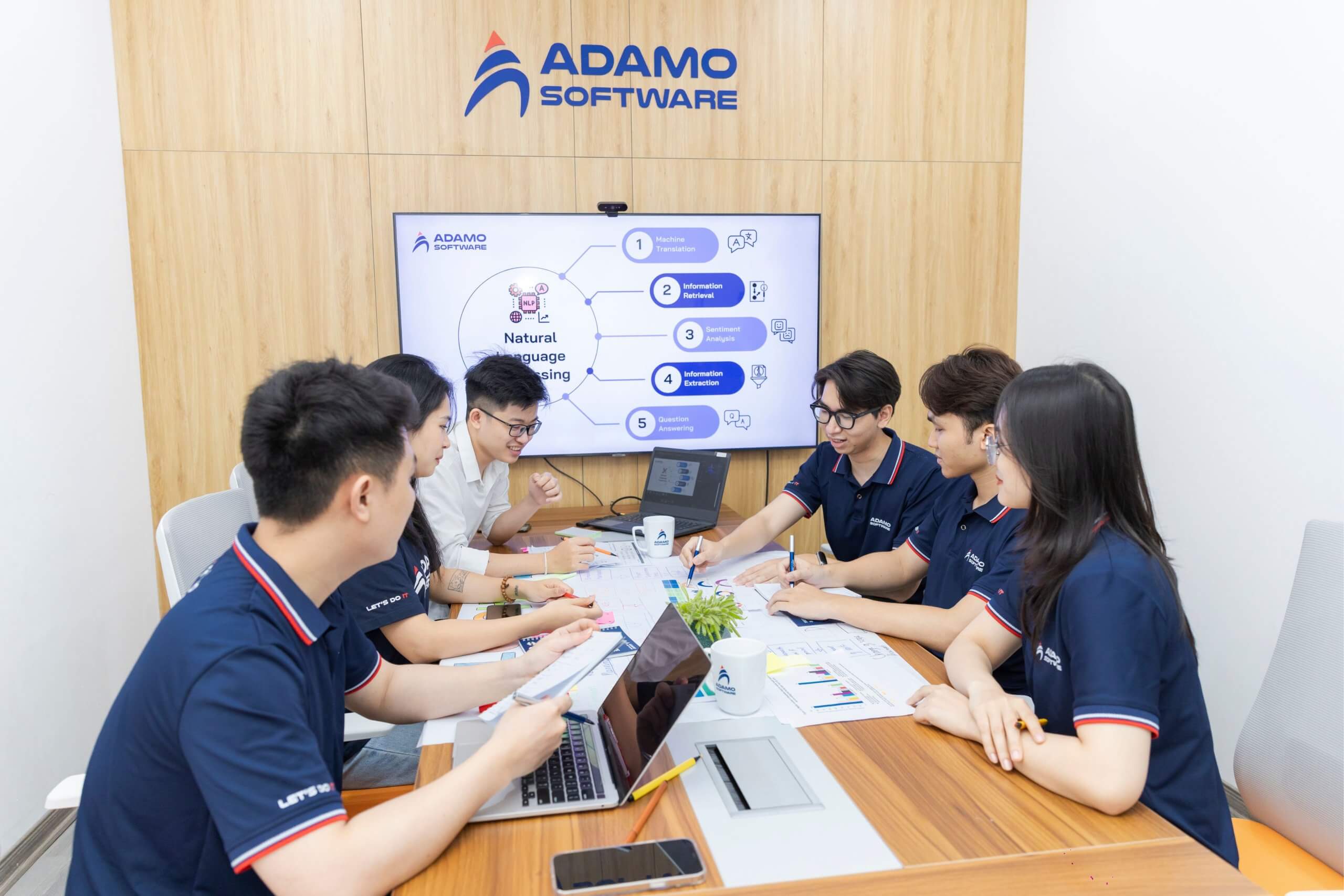
At Adamo Software, we specialize in creating safe and effective healthcare applications. Our team has extensive experience developing systems that help healthcare providers deliver the best care. Whether you want to build a remote patient monitoring system, integrate fitness tracking, or improve medical consultation services, we are here to help.
Our goal is to design user-friendly applications that integrate seamlessly into the daily routine of healthcare providers. We focus on clear, intuitive interfaces combined with advanced algorithms that ensure timely alerts to changes in patient data. With Adamo Software, you can create a healthcare software solution that enhances patient care and improves workflow efficiency. Contact us today to start building your remote patient monitoring system.







